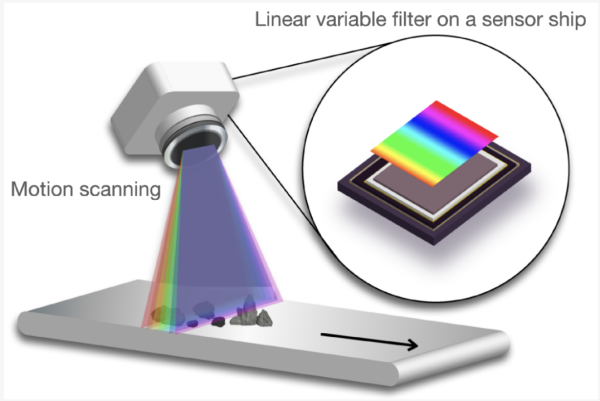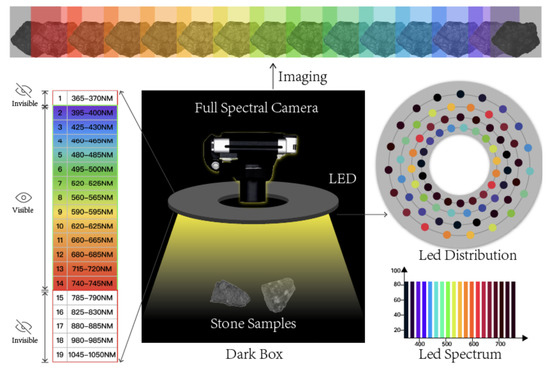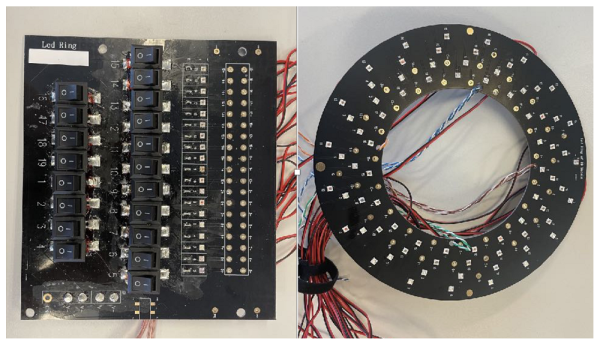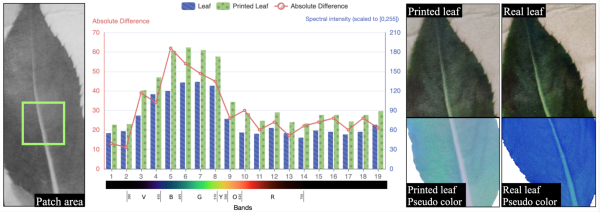Columbus, United States, 17th Oct 2025 – A study in the journal Sensors unveils an affordable and efficient system that captures high-fidelity spectral data in low-light and underground environments, opening new possibilities for geology, agriculture, and manufacturing.
A research team from The Ohio State University has developed an active hyperspectral imaging system capable of capturing precise spectral data in the complete absence of light. The design, constructed from low-cost commercial components, presents an accessible and efficient alternative to traditional technologies.
The breakthrough, detailed in the peer-reviewed journal Sensors, introduces a compact and energy-efficient prototype poised to transform material analysis in environments previously considered inaccessible for high-fidelity spectral sensing.

Traditional hyperspectral imaging systems identify materials by analyzing their special spectral “fingerprints” across hundreds of wavelength bands. However, these passive systems are fundamentally dependent on ambient light and often require costly, complex optical components, restricting their use in dark or confined settings such as underground tunnels, mines, or even for quality control in dimly lit industrial facilities.
The Ohio State team’s special approach overcomes these limitations by replacing passive detection with a programmable array of 76 single-wavelength LEDs synchronized with a full-spectrum camera. This active illumination method allows the system to generate its own light source, ensuring high-quality spectral data acquisition regardless of external lighting conditions.

“Our goal was to make hyperspectral imaging more efficient, accessible, and usable in real-world settings — not just in laboratories,” said Dr. Rongjun Qin, a professor in the Department of Civil, Environmental and Geodetic Engineering and the corresponding author of the study. “This system allows us to take the lab to the field, wherever that field may be.”
To validate its performance, the team tested the prototype on a variety of samples, including fruits, plant leaves, and rock specimens, under challenging low-light conditions. The results demonstrated a remarkable capability to distinguish subtle spectral changes—such as variations in fruit freshness or mineral composition—that are invisible to standard RGB cameras. A machine learning analysis of the captured data achieved a classification accuracy of up to 90%, a significant improvement over the 70% accuracy obtained with conventional imaging under similar conditions.

Beyond its high accuracy, the system offers substantial gains in efficiency. The prototype reduced the full-image acquisition time from 20 seconds to under 2.5 seconds. By eliminating the need for complex filters and bulky external lighting setups, the design is not only more cost-effective but also highly portable and consumes less power. Its lightweight form factor is suitable for portable field use or integration with drone-based platforms, enabling faster and more sustainable field operations.
A central theme of the research is the democratization of advanced sensing technology. Built entirely from commercially available, or “off-the-shelf,” components, the system drastically lowers the financial barrier for smaller laboratories and research institutions.
“All of the components are low-cost and readily available. This means laboratories and universities worldwide can adapt our design with minimal resources,” stated Yang Tang, a Ph.D. student and the study’s lead author. “We believe this will empower a wider scientific community and open up new opportunities for AI-driven material analysis and education in optical sensing.”
The potential applications for this technology are extensive and cross-sectoral. In geological exploration and mining, it can operate in dark, subterranean environments without the need for expensive and cumbersome lighting equipment. In agriculture and food safety, it offers a reliable method for monitoring crop health or detecting contamination. For manufacturing and environmental monitoring, it provides consistent and repeatable data under any lighting condition, enhancing quality control and compliance.

The research team plans to continue refining the system by enhancing its capture speed, increasing spectral resolution, and further integrating the hardware into a fully portable and automated imaging platform. “We envision a future where hyperspectral imaging becomes as routine as taking a photograph — efficient, affordable, and universally accessible,” added Dr. Qin.
About the Study
The full study, titled “An Active Hyperspectral Imager by a Programmable LED Array and a Full-Spectrum Camera,” is published in Sensors. It can be accessed at the following DOI: https://doi.org/10.3390/s23031437
About The Ohio State University
The Ohio State University is one of the leading public research institutions in the United States, advancing interdisciplinary science and engineering with a focus on data analytics, sustainability, and applied technology.

About CAIMO Global
CAIMO Global is an academic media and science communication agency dedicated to bridging academic research and global audiences. The agency collaborates with universities, research institutions, and scholars worldwide to help academic studies gain understanding, increase visibility, and generate impact, ensuring that outstanding research is seen, shared, and remembered.
Media Contact
Organization: CAIMO Global Academic Media Co., Ltd.
Contact Person: YangXue
Website: https://flo.host/QNirG-Q/
Email: Send Email
City: Columbus
Country:United States
Release id:35603
The post New Active Hyperspectral System From Ohio State University Researchers Enables Precise Spectral Sensing in Complete Darkness appeared first on King Newswire. This content is provided by a third-party source.. King Newswire makes no warranties or representations in connection with it. King Newswire is a press release distribution agency and does not endorse or verify the claims made in this release. If you have any complaints or copyright concerns related to this article, please contact the company listed in the ‘Media Contact’ section
Disclaimer: The views, suggestions, and opinions expressed here are the sole responsibility of the experts. No Chronicle Hub journalist was involved in the writing and production of this article.
